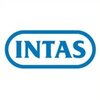Senior Executive Regulatory Affairs
10+ Senior Executive Regulatory Affairs Interview Questions and Answers

Asked in Albert David

Q. What is WHO annex 2 for stability guidelines?
WHO annex 2 provides guidelines for stability testing of active pharmaceutical ingredients and finished pharmaceutical products.
WHO annex 2 outlines the requirements for stability testing of pharmaceutical products.
It includes guidelines on the design of stability studies, storage conditions, and testing frequency.
The annex also covers the evaluation of stability data and the establishment of shelf life.
Compliance with WHO annex 2 is important for ensuring the quality and eff...read more
Asked in Superchem Nutri Formulations

Q. Does dietary fiber provide energy? If yes, how much?
Yes, dietary fiber provides energy but it is not absorbed by the body.
Dietary fiber is a type of carbohydrate that cannot be digested by the body.
It passes through the digestive system mostly intact.
Although it does not provide calories, it can help regulate blood sugar levels and promote satiety.
The recommended daily intake of fiber is 25-30 grams for adults.
Good sources of fiber include fruits, vegetables, whole grains, and legumes.

Asked in Albert David

Q. What are the difficulties associated with exporting?
Difficulties for export include regulatory compliance, market access barriers, cultural differences, and logistical challenges.
Regulatory compliance requirements vary by country and can be complex to navigate.
Market access barriers such as tariffs, quotas, and trade restrictions can hinder export efforts.
Cultural differences in business practices, communication styles, and consumer preferences may require adaptation.
Logistical challenges like transportation, packaging, and di...read more
Asked in Superchem Nutri Formulations

Q. How are carbohydrates, protein, and fat related to energy production?
Carbs, protein & fat are macronutrients that provide energy to the body.
Carbs are the primary source of energy for the body.
Protein can also be used for energy, but it is primarily used for building and repairing tissues.
Fat is a secondary source of energy and is used when carb stores are depleted.
The body converts carbs into glucose, which is used for energy.
Protein is broken down into amino acids, which can be converted into glucose or used for energy.
Fat is broken down int...read more

Asked in Albert David

Q. What is CTD as per ICH?
CTD stands for Common Technical Document as per ICH guidelines.
CTD is a set of specifications for the registration of medicines and designed to be used across different regulatory agencies.
It includes modules on quality, safety, and efficacy of the drug product.
CTD format helps streamline the submission process for regulatory approval.
Examples of CTD modules include Module 1 (Administrative information), Module 2 (Summaries), Module 3 (Quality), Module 4 (Nonclinical study re...read more
Asked in Superchem Nutri Formulations

Q. Labeling Regulations as per FSSAI & Legal metrology
Labeling regulations are crucial for compliance with FSSAI and Legal Metrology requirements.
FSSAI mandates specific labeling requirements for food products, including information on ingredients, nutritional value, and allergens.
Legal Metrology regulations govern the labeling of packaged goods, including mandatory declarations of net quantity, MRP, and consumer care information.
Non-compliance with labeling regulations can result in penalties, product recalls, and damage to bra...read more
Senior Executive Regulatory Affairs Jobs




Asked in Albert David

Q. Why is validation required?
Validation is required to ensure that a product or process meets the specified requirements and is fit for its intended use.
Validation helps to confirm that the product or process will consistently perform as intended.
It ensures that the product meets regulatory requirements and standards.
Validation helps to identify and mitigate risks associated with the product or process.
It provides evidence that the product is safe, effective, and reliable.
Validation is essential in indus...read more

Asked in Albert David

Q. What is a dossier?
A dossier is a collection of documents or information compiled for a specific purpose or project.
A dossier typically includes reports, data, analysis, and other relevant documents.
In regulatory affairs, a dossier may refer to a collection of documents submitted to regulatory authorities for approval of a new drug or medical device.
Dossiers are often organized in a specific format to meet regulatory requirements and standards.
Maintaining accurate and up-to-date dossiers is cru...read more
Share interview questions and help millions of jobseekers 🌟

Asked in Superchem Nutri Formulations

Q. What is the difference between Mercury and Methyl mercury?
Mercury is a chemical element while methyl mercury is a toxic organic compound.
Mercury is a heavy metal that is naturally occurring and can be found in the environment.
Methyl mercury is formed when mercury combines with carbon and hydrogen atoms.
Mercury exposure can cause neurological and developmental problems while methyl mercury is a potent neurotoxin.
Mercury is used in various industrial processes while methyl mercury is found in contaminated fish and seafood.
Mercury can ...read more
Asked in Superchem Nutri Formulations

Q. Current FSSAI Notifications/Advisory/Orders
FSSAI has issued various notifications, advisories and orders related to food safety and standards.
FSSAI has issued an advisory on the use of potassium bromate and potassium iodate in bread making.
FSSAI has issued an order to ban the use of 28 pesticides in food items.
FSSAI has issued a notification on the labeling requirements for packaged food products.
FSSAI has issued an advisory on the use of antibiotics in animal feed.
FSSAI has issued an order to recall Maggi noodles due...read more

Asked in Albert David

Q. component of Module 3
Module 3 is a part of the Common Technical Document (CTD) that contains information on quality aspects of the drug product.
Module 3 includes detailed information on drug substance, drug product, manufacturing process, packaging, and stability data.
It also includes information on specifications, analytical methods, and validation studies.
Examples of documents in Module 3 include batch records, certificates of analysis, and stability reports.
Asked in Superchem Nutri Formulations

Q. Safety Parameters for Food Products
Safety parameters for food products include microbiological, chemical, and physical hazards.
Microbiological hazards include bacteria, viruses, and parasites that can cause foodborne illnesses.
Chemical hazards include toxins, pesticides, and additives that can be harmful if consumed in large quantities.
Physical hazards include foreign objects such as glass or metal that can cause injury if ingested.
Food safety regulations and guidelines are in place to ensure that food product...read more
Asked in Superchem Nutri Formulations

Q. Reference books for Ayurveda Products
There are several reference books available for Ayurveda products, including the Ayurvedic Pharmacopoeia of India and the Bhaisajya Ratnavali.
Ayurvedic Pharmacopoeia of India
Bhaisajya Ratnavali
Charaka Samhita
Sushruta Samhita
Ashtanga Hridaya
Madhava Nidanam
Interview Experiences of Popular Companies








Reviews
Interviews
Salaries
Users

















